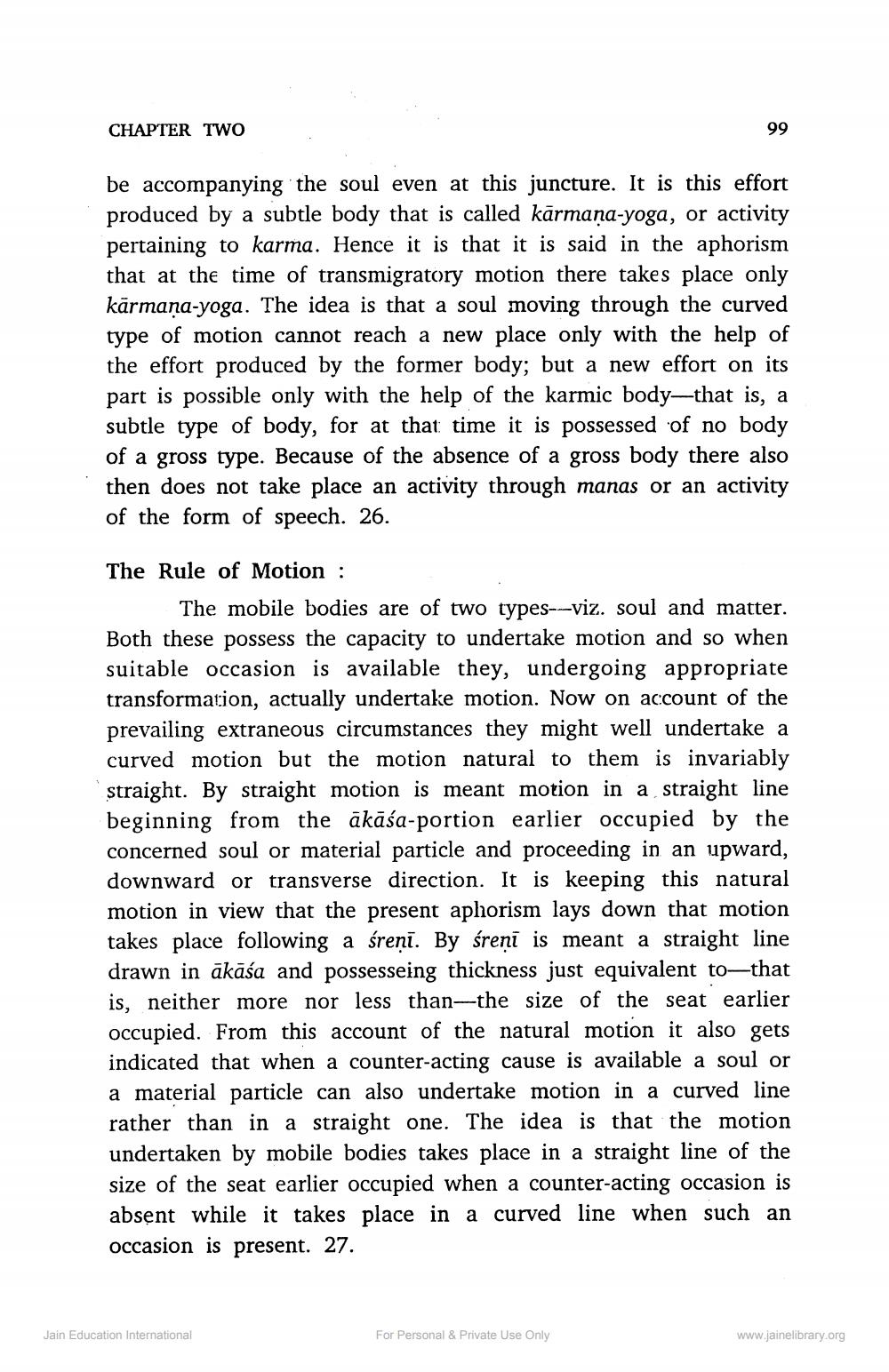________________
CHAPTER TWO
99
be accompanying the soul even at this juncture. It is this effort produced by a subtle body that is called kārmaņa-yoga, or activity pertaining to karma. Hence it is that it is said in the aphorism that at the time of transmigratory motion there takes place only kārmana-yoga. The idea is that a soul moving through the curved type of motion cannot reach a new place only with the help of the effort produced by the former body; but a new effort on its part is possible only with the help of the karmic body—that is, a subtle type of body, for at that time it is possessed of no body of a gross type. Because of the absence of a gross body there also then does not take place an activity through manas or an activity of the form of speech. 26.
The Rule of Motion :
The mobile bodies are of two types--viz. soul and matter. Both these possess the capacity to undertake motion and so when suitable occasion is available they, undergoing appropriate transformation, actually undertake motion. Now on account of the prevailing extraneous circumstances they might well undertake a curved motion but the motion natural to them is invariably straight. By straight motion is meant motion in a straight line beginning from the ākāśa-portion earlier occupied by the concerned soul or material particle and proceeding in an upward, downward or transverse direction. It is keeping this natural motion in view that the present aphorism lays down that motion takes place following a śreņi. By śreņi is meant a straight line drawn in ākāśa and possesseing thickness just equivalent to—that is, neither more nor less than—the size of the seat earlier occupied. From this account of the natural motion it also gets indicated that when a counter-acting cause is available a soul or a material particle can also undertake motion in a curved line rather than in a straight one. The idea is that the motion undertaken by mobile bodies takes place in a straight line of the size of the seat earlier occupied when a counter-acting occasion is absent while it takes place in a curved line when such an occasion is present. 27.
Jain Education International
For Personal & Private Use Only
www.jainelibrary.org




